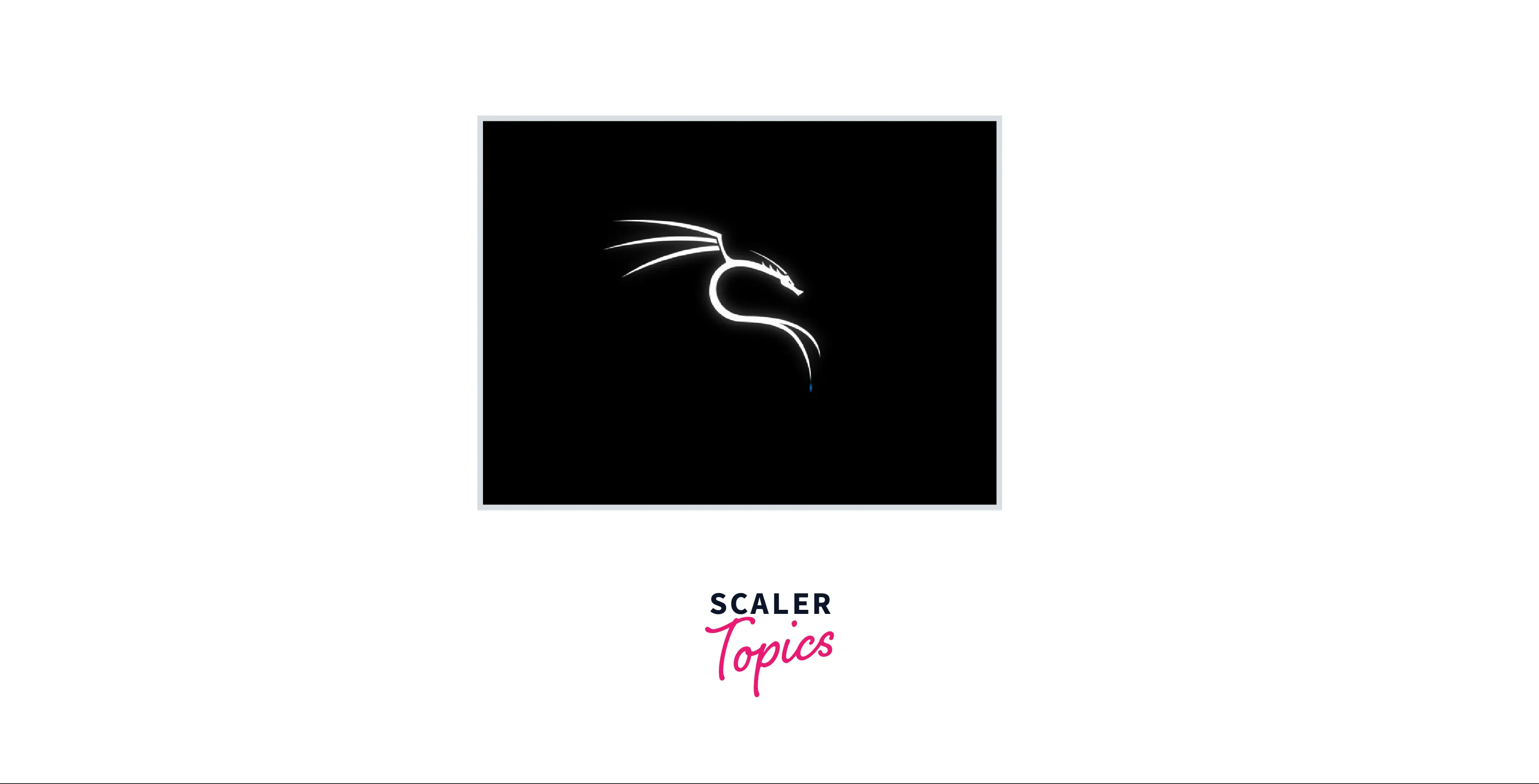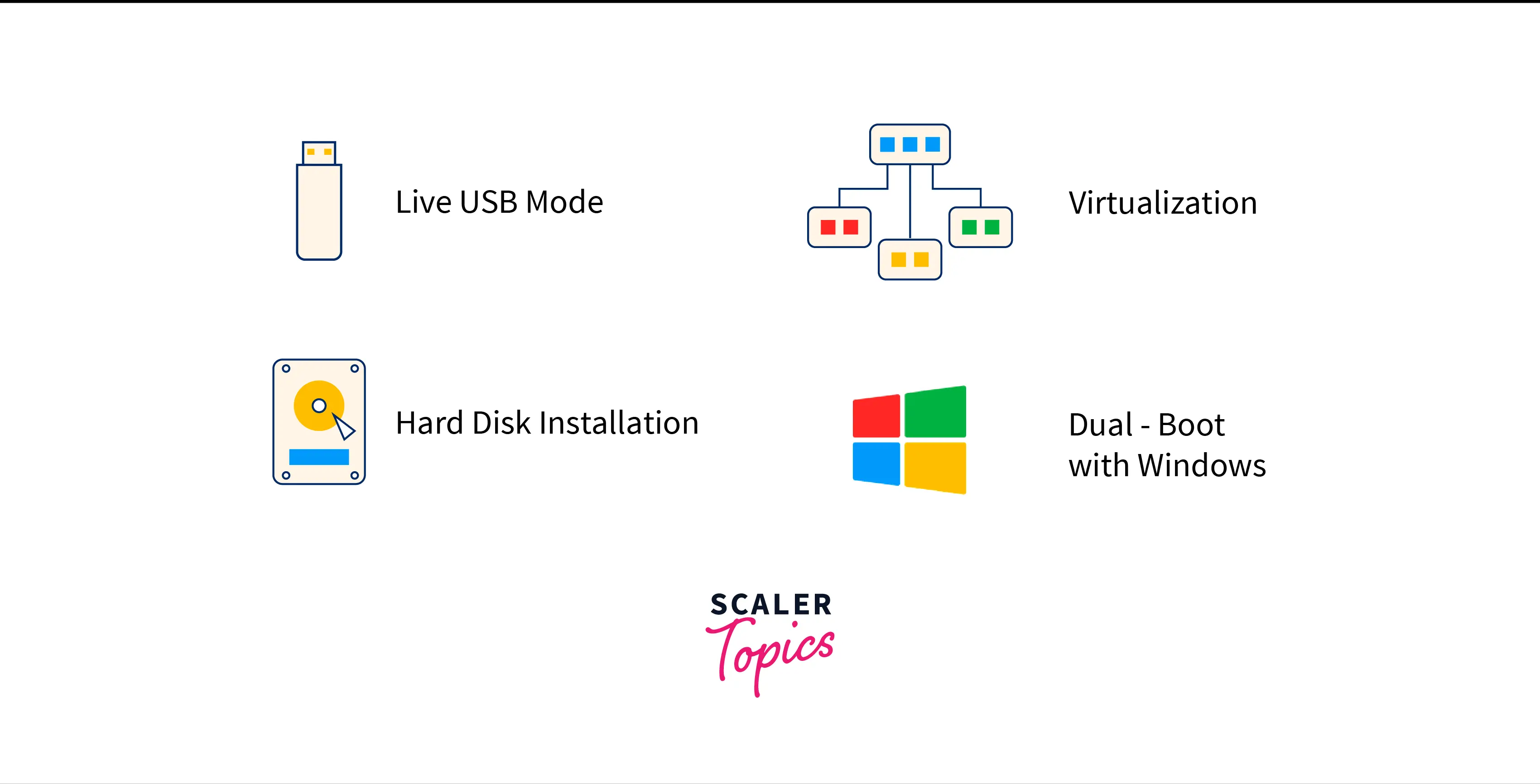Kali Operating System
Overview
Kali Linux, an open-source Linux-based operating system designed for advanced penetration testing and digital forensics, was formerly known as BackTrack Linux as it was created through the rewriting of BackTrack by Devon Kearns and Mati Aharoni of Offensive Security.
What is the Kali Operating System?

Kali Linux is a cross-platform solution that information security experts and enthusiasts can easily access and use for free. It is a secure distribution of Linux specifically designed for advanced penetration testing and digital forensics; Kali operating system is derived from Debian. Debian has been a dependable and stable distribution for many years, providing a strong foundation for the Kali Linux desktop.
Their prior operating system for information security was BackTrack. In March 2013, Kali Linux's initial version, 1.0.0, was released. Currently, Kali os is supported and funded by Offensive Security. The phrase "The very Advanced and free Penetration Testing kit" would be prominently displayed on Kali's website today (www.kali.org). Ironically, this statement is yet to be proven despite being very bold.
There are hundreds of well-designed tools included in the Kali operating system for various information security activities, including reverse engineering, computer forensics, penetration testing, and security research.
Kali Linux OS Installation Methods
On a personal computer, there are various different ways to run Kali Operating System:

- Live USB Mode: A USB stick with a minimum of 8 GB of storage space can be flashed with Kali os. Live USBs can sometimes be used for persistent storage, although such require additional configuration. The stick may boot a working installation of the kali operating system after the ISO image has been flashed.
- Virtualization: An instance of Kali Linux can be used as the host operating system in a virtual machine. The hardware specifications are customizable. Users can learn safely without putting their systems at risk by utilizing a host machine and a guest operating system like Kali Linux.
- Hard Disk Installation: One can install Kali operating system on a hard drive, overwriting any other data or OS, to ensure that the changes made to the system are permanent. Live boot desktop removes user data upon reboot, but hard drive installations make permanent changes.
- Dual-Boot: In this case, Kali OS will be installed alongside any pre-existing operating system on a computer rather than replacing it. Since many people prefer to keep both Kali operating system and Windows. Therefore, working and personal time distribution is also successfully divided between the two.
Features of Kali Operating System
We've discussed the Kali operating system and learned where it came from. Let's now explore some of Kali's more prominent features for penetration testers.

- Pre-installed Penetration Testing Tools: In Kali Linux, over 600 penetration testing tools, including Nmap, Wireshark, Crunch, and Aircrack-ng, are pre-installed.
- Safe Development Team: The Kali Linux team is limited to a small number of people who are trusted to provide packages and communicate with repositories, both of which are done using a variety of safety protocols.
- Full Customization support: It is always simple to create a customized Kali operating system for our special needs using metapackages customized to the specific requirement sets of security professionals and a very user-friendly ISO modification process. Since live-build is strongly integrated with Kali Linux, we have a lot of freedom to modify and modify any element of our Kali Linux ISO images.
- Multilingual OS: even though penetration tools are often designed in English, Kali's developers have ensured that it provides proper multilingual support, allowing more users to conduct their work in their own language.
- Kali Linux Metapackages: The metapackage collections in Kali involve several toolkits. Setting up customized, reduced environments is made simple by using kali os. For example, we could use apt-get install Kali-Linux-wireless if we only needed a few wireless tools for an upcoming assessment.
- Kali Linux Full Disk Encryption: Kali Linux also offers the LUKs nuke option, which allows us to regulate data destruction very quickly. Kali Linux LUKS Full Disk Encryption (FDE) can perform complete disc encryption of your critical penetration testing on a computer drive.
- Supports wide-ranging Wireless Devices: Kali operating system can run on various hardware since it is made to work with as many wireless devices and USB devices.
- Kali in our surroundings: Wherever we are, Kali is nearby and ready to help. Several options include mobile devices, ARM, Amazon Web Services, Docker, virtual machines, bare metal, Windows Subsystem for Linux, and others.
Advantages of Kali Operating System
Here are some advantages of Kali Linux OS:
- Supports more than 600 penetration tools, such as Nmap and Crunch.
- Multiple-language support.
- Open development tree.
- Adherence to the standard file-system structure.
- Completely customizable.
- Free, as there are no fees for Linux users.
- compatibility with a variety of wireless devices
Disadvantages of Kali Operating System
The following are the disadvantages of Kali Linux:
- Kali operating system is quite a bit slower than many operating systems.
- There are a few software that may malfunction on Kali Linux.
- files with the.exe extension cannot be opened in kali os.
- It's not suggested for people who just started using Linux and want to use the operating system. (Since Kali OS is based on penetration.)
- Programs on windows will not be able to run on the Kali Linux Operating System.
Conclusion
- Kali Operating System is an open-source and free Linux-based operating system designed for advanced penetration testing and digital forensics.
- Kali Linux was formerly known as BackTrack Linux as it was created through the rewriting of BackTrack by Devon Kearns and Mati Aharoni of Offensive Security.
- Kali os is specifically designed for advanced penetration testing and digital forensics; Kali operating system is derived from Debian.
- There are various different ways to run Kali Linux on our systems, such as Live USB Mode, Hard Disk, Dual-Boot, and Virtualization.
- kali operating system is free and supports multi-language and Multilingual OS.
- Kali operating system is quite slow, and many softwares don't work properly as well as the programs on windows.
